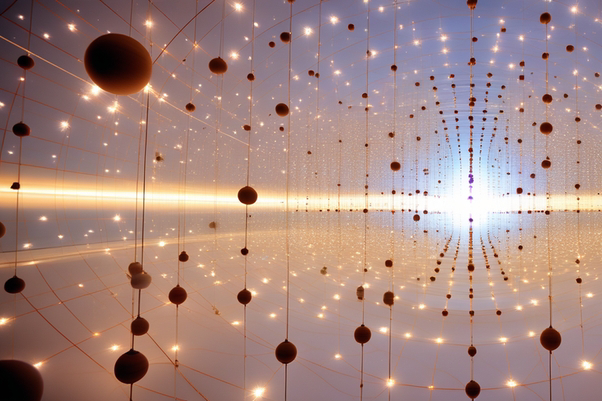Baryonic Acoustic Oscillations (BAO)
Baryonic Acoustic Oscillations (BAO) are a feature of the large-scale structure of the universe, providing a "standard ruler" that helps astronomers measure the expansion history of the cosmos. The term "baryonic" refers to normal matter, such as protons and neutrons, which make up stars, galaxies, and everything we see around us.
The concept of Baryonic Acoustic Oscillations originated from the early universe, specifically during the epoch of recombination, which occurred about 380,000 years after the Big Bang. At that time, the universe was a hot, dense soup of particles, primarily electrons and protons. Photons (light particles) were constantly interacting with these charged particles through a process called Thomson scattering.
However, as the universe expanded and cooled, electrons and protons combined to form neutral hydrogen atoms. This process, known as recombination, allowed photons to travel freely through space without constant scattering. The last scattering of these photons left a faint imprint in the cosmic microwave background (CMB), which is the afterglow of the Big Bang.
The baryonic acoustic oscillations began as sound waves in the primordial plasma of the early universe. These sound waves created fluctuations in the density of matter, leaving behind a distinctive pattern in the distribution of galaxies we observe today. The characteristic scale of these oscillations is the sound horizon at the time of recombination, which is the maximum distance sound waves could have traveled before the universe became transparent.
In the present-day universe, this scale serves as a standard ruler, providing a way to measure distances. The observed distribution of galaxies reflects the underlying BAO pattern, and by studying this pattern, astronomers can infer the expansion history of the universe. BAO has become a crucial tool for cosmologists to constrain cosmological parameters and understand the nature of dark energy, the mysterious force driving the accelerated expansion of the universe.





Comments
Post a Comment